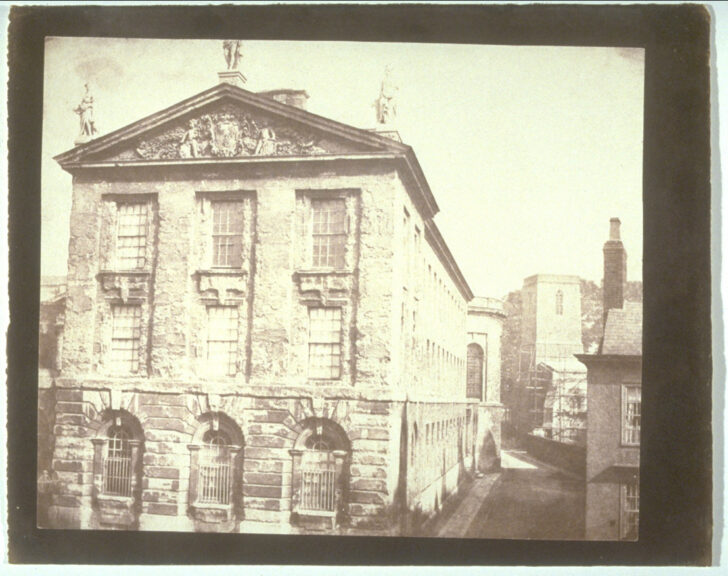Part of Queen’s College, Oxford
William Henry Fox Talbot

Description
Subject Matter:
As its title informs us, this photograph depicts a view of buildings associated with Queen’s College, in Oxford, England. The building on the left is featured most prominently, its weathered and stained façade filling the left side of the frame. Above three floors lined with large, grated windows is a frieze, which is topped by three figurative statues. The street runs past the building’s right side, where a church with some scaffolding climbing its exterior is assembled. The photographer, William Henry Fox Talbot, is largely considered the inventor of light sensitive paper and positive-negative photography. This image appears as the first plate in his seminal book, The Pencil of Nature, in which Talbot presents his invention and the art and application of “photographic drawing.” Due to the nature of using a thin paper negative, the positive image has a smooth, almost feathery delicacy.
Physical Description:
This photograph depicts a view of an old building with three floors of tall, grated windows, a frieze near its roof, topped with three statues. A street runs down the side of the building where there is a church with scaffolding on it.
Usage Rights:
If you are interested in using an image for a publication, please visit https://umma.umich.edu/request-image/ for more information and to fill out the online Image Rights and Reproductions Request Form.